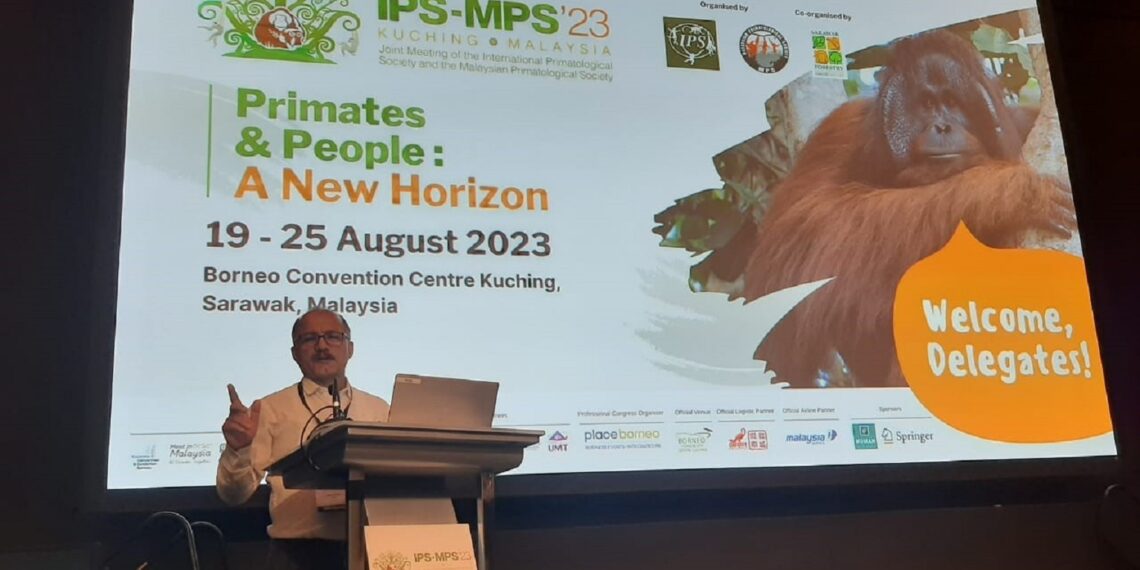GUWAHATI: A prominent primatologist from Assam made a significant mark at the recently held International Primatological Society-Malaysian Primatological Society (IPS-MPS) Joint Meeting 2023 in Kuching, Malaysia.
The meeting, themed “Primates And People: A New Horizon”, witnessed over 600 in-person attendees from 60 countries, along with an additional 150 participants virtually from August 19-25.
The head of the Primate Research and Conservation Division of the research-oriented biodiversity conservation organisation, Aaranyak, Dr Dilip Chetry presented a paper titled “Identification of Knowledge Gap for Future Conservation of Western Hoolock Gibbon (Hoolock hoolock) in India” during the gibbon symposium. This insightful presentation addressed the conservation status and future opportunities for conserving the western Hoolock gibbons in India, drawing the attention of a global audience of scientists, primatologists, and gibbonologists.
Dr Chetry also illuminated the plight and conservation of the Hoolock gibbon during the “Planet of the Primates: A Night with the International Primatologists” event at Malaysia’s Swinburne University. Highlighting threats and successful conservation endeavours by the governments of India and Assam, he accentuated the designation of National Parks, wherein the Hoolock gibbon stands as a flagship species. Additionally, Dr Chetry outlined Aaranyak’s invaluable contributions towards the conservation of this species.
Categorized as endangered by the IUCN, the Western Hoolock gibbon holds the unique distinction of being India’s only ape. Predominantly found in India’s Northeast, they are restricted to the southern bank of the Brahmaputra-Debang river system.
In another notable session, Dr Chetry shifted focus to the “Habitat Corridors of Golden langur (Trachypithecus geei) in Bongaigaon district of Assam, India” during the symposium on “Impacts of Development on Primates: Gaps, Lessons Learned, and Potential Solutions”. This endangered species, endemic to India and Bhutan, faces threats primarily from habitat loss and fragmentation.
A comprehensive study in the Bongaigaon district during 2022-2023 unearthed both existing and potential corridors for the Golden langur. Data compiled from field studies, satellite imagery, and questionnaires revealed the identification of 5 existing and 3 potential corridors.
Sadly, the study also recorded the death of five Golden langurs due to highway crossings and electrocution. Highlighting the need for protection, Dr Chetry proposed the establishment of canopy bridges at three strategic points for safe langur movement.















